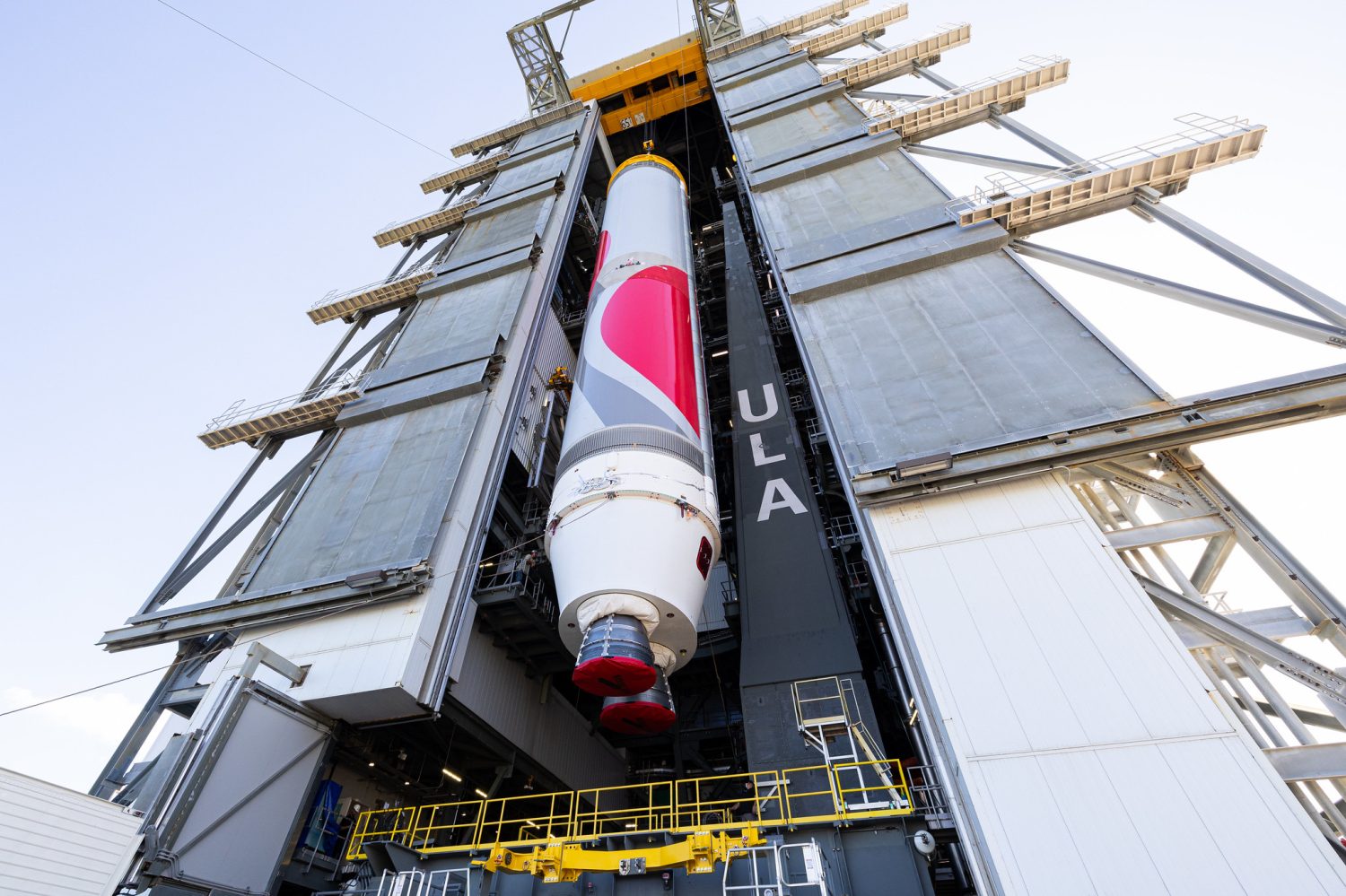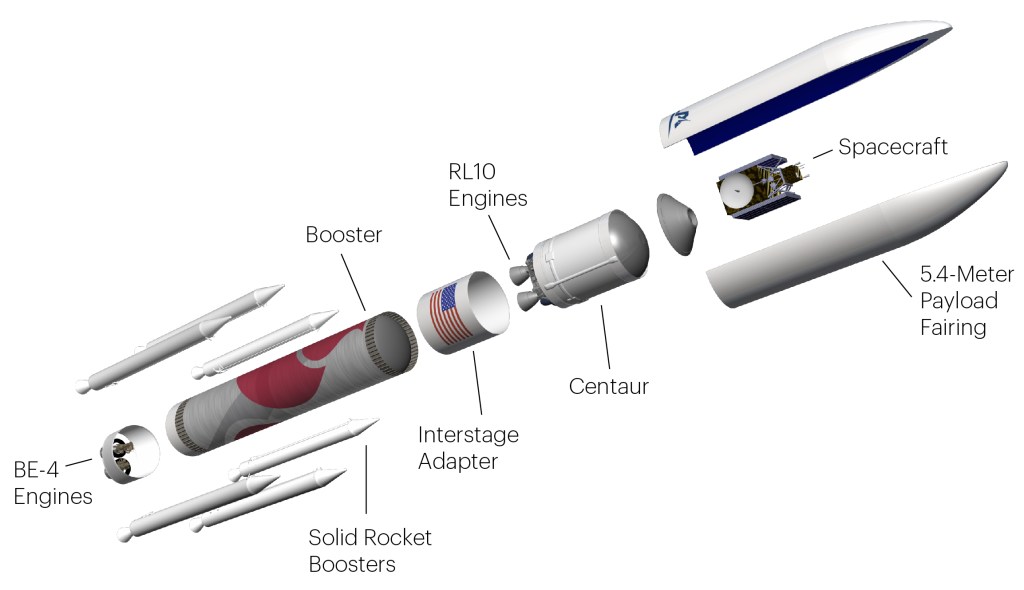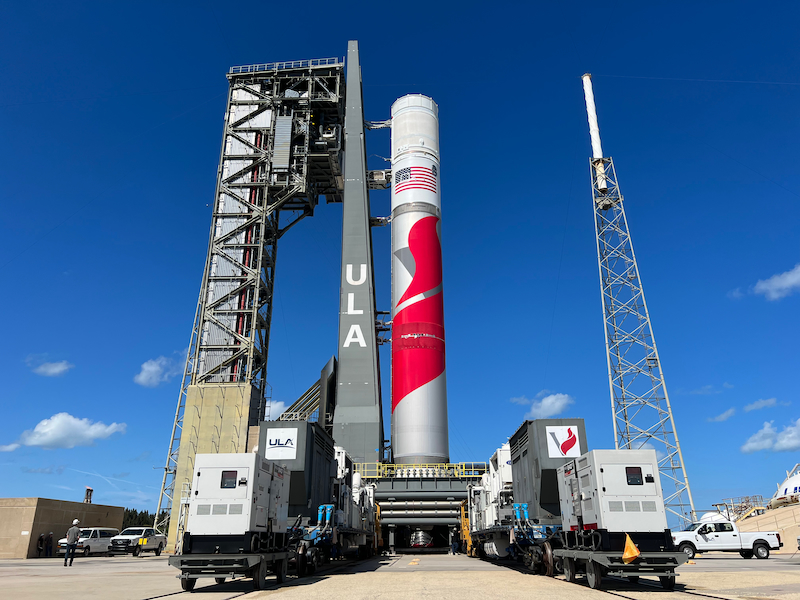
In case you missed it, on March 29, a test article for the United Launch Alliance’s (ULA) Centaur V experienced an anomaly that resulted in a fireball. This occurring just over a month before the upper stage’s launch, then set for May 4.
Vulcan and the Centuar V
Vulcan is ULA’s first rocket they’ve developed. Before ULA, Lockheed developed the Atlas V and Boeing developed the Delta IV. Vulcan will also be the first orbital launch of Blue Origin hardware. Namely, their BE-4 rocket engines burn liquid methane and liquid oxygen. The same engine will later power Blue Origin’s first orbital rocket, New Glenn.
The Centaur V is an evolved upper stage for ULA’s new upcoming rocket, Vulcan. The upper stage is intending to draw from decades of experience and data from the Centaur stages. Centaur itself is a liquid hydrogen (LH2) and liquid oxygen-fueled upper stage. Its most recent form, Centaur III, has been flying on ULA’s workhorse rocket, the Atlas V.

The Anomaly
The anomaly occurred at NASA’s Marshall Space Flight Center in Alabama. A facility familiar with planned explosions. Back in 2019, engineers used a structure at the facility to intentionally crush the liquid hydrogen stage of NASA’s Space Launch System to failure. That test was filled with inert gases while the recent Centaur V anomaly occurred while filled with liquid hydrogen fuel and liquid nitrogen (or LN2). Its worth noting that there were no RL-10 rocket engines on this tank.
Tory Bruno, CEO of ULA reported the same day on the anomaly stating “Keeping you posted: During Qual testing of Centaur V structural article at MSFC, the hardware experienced an anomaly. This is is [sic] why we thoroughly & rigorously exercise every possible condition on the ground before flight. Investigation is underway. Vulcan will fly when complete.”
Join our Discord Server: Join the community with forums and chatrooms about space!
Tory also clarified in response to questions that no one was hurt by the anomaly. He also noted that the anomaly was a ‘deflagration’, a fancy word for a slow-burning ignition of gases. Conversely, if it was a detonation, the fireball would’ve spread much faster and with much greater energy. Further, he shared that most of the visible debris from the available clip is from insulating materials for the tank. The majority of the tank was reportedly still inside the test rig.
Eric Berger of Ars Technica said that footage of the event was deleted from servers, something that Tory Bruno later said is standard practice. Responding directly to Eric Berger, Tory Bruno commented that the deletion of the video “didn’t happen”.
NASA has a webpage speaking to Controlled Unclassified Information (CUI) which directly references 32 CFR part 2002, established by Executive Order 13556. Part 2002 specifically details the handling of classified documentation and material.
How Does This Impact Its Maiden Launch?

Vulcan’s premier launch known as “Certification-1” will carry Astrobotic’s Peregrine lunar lander, along with two Project Kuiper prototype satellites for Amazon. Vulcan’s launch had slipped into the summer, even before this anomaly. There’s no clear indication of how this recent failure impacts the present schedule.
FTC: We use income earning auto affiliate links. More.



Comments